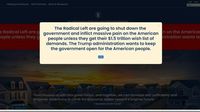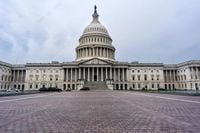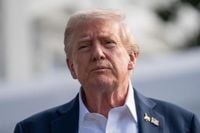With the clock ticking down to midnight on September 30, 2025, Washington was gripped by tension as the U.S. government lurched toward its first shutdown in nearly seven years. In a dramatic sequence of events, Senate Democrats voted down a Republican-backed stopgap funding bill, effectively sealing the government’s fate as agencies prepared for closure and hundreds of thousands of federal workers waited anxiously for news about their jobs and paychecks.
The Senate vote, held late Tuesday, saw the Republican proposal to extend government funding for seven weeks fall short by a 55-45 margin—well below the 60 votes needed to break a filibuster and send the bill to President Donald Trump’s desk. According to Associated Press reporting, the White House’s Office of Management and Budget (OMB) swiftly issued a memo instructing federal agencies to "execute their plans for an orderly shutdown." The memo signaled the seriousness of the situation: the government would begin shutting down at 12:01 a.m. on October 1, 2025, unless a last-minute deal could be struck.
The heart of the standoff? Health care. Senate Democratic Leader Chuck Schumer accused Republicans of refusing to negotiate on the extension of Affordable Care Act (ACA) subsidies and the reversal of Medicaid cuts enacted earlier in the summer. “We are not going to support a partisan Republican spending bill that continues to gut the health care of everyday Americans,” House Democratic Leader Hakeem Jeffries declared, as quoted by AP. Schumer was equally blunt, saying, "It’s only the president who can do this. We know he runs the show here." He added, “Republicans have until midnight tonight to get serious with us.”
Republicans, for their part, insisted that their bill was a "clean" extension of funding and accused Democrats of holding the government hostage over unrelated policy demands. Senate Majority Leader John Thune said, “We are not going to be held hostage by the Democrats’ demands.” Thune and his GOP colleagues maintained that negotiations on health care tax credits could take place after the government was kept open, but that tying those issues to the funding bill was unacceptable. “If they decide to vote it down tonight, they’re going to be the ones that have to explain at midnight tonight why the government shut down,” Thune told reporters, as recounted by CNN.
This impasse did not emerge in a vacuum. The Senate’s failure to pass either the Republican or Democratic funding proposals followed a tense, bipartisan White House meeting on September 29, 2025. According to CNN, the meeting yielded little progress, and instead of conciliatory gestures, President Trump posted a fake, mocking video targeting Democratic leaders. The video, which depicted Schumer and Jeffries in a caricatured fashion, drew swift condemnation. Jeffries called it a “racist and fake AI video,” while Schumer accused Trump of "trolling on the internet like a 10-year-old."
The political theater masked the real-world consequences faced by federal employees and the broader public. The nonpartisan Congressional Budget Office estimated that about 750,000 federal workers could be furloughed each day during the shutdown. The Department of Defense alone expected to furlough roughly 334,900 civilian employees, while Health and Human Services planned to send home about 41% of its nearly 80,000 staff. The Department of Education would furlough 1,500 of its 1,700 employees, though federal student aid workers would be spared, according to contingency plans cited by Federal News Network.
Not all government functions would grind to a halt. Essential services—like FBI investigations, CIA operations, air traffic control, and the Armed Forces—would continue. Social Security payments and Medicare claims would still be processed, and Veterans Affairs health care would remain available. The U.S. Postal Service, funded independently, would keep delivering mail as usual. Even the Smithsonian museums planned to stay open through October 6, 2025, using prior-year funds, though they warned that updates could come at any time.
Still, the impact on daily life—especially for those in and around Washington, D.C.—was palpable. D.C. Mayor Muriel Bowser noted that while the city’s basic operations don’t rely on federal funding, “We are impacted because many of our residents and the residents in Maryland and Virginia have a lot of anxiety about what it means for their next paycheck or what it means for their job.” Local services such as street cleaning and trash pickup would continue, but D.C. courts announced they would halt marriage license issuance and ceremonies during the shutdown.
Meanwhile, national parks faced an uncertain fate. A group of former superintendents urged the Trump administration to close the parks entirely, citing damage and vandalism during previous shutdowns and warning that staff reductions—already at 24%—and budget cuts would make matters worse. Some open-air sites, like the National Mall, would remain accessible, but many other parks could be shuttered to protect their resources and visitors.
The political blame game, as ever, was in full swing. Democrats argued that Republicans—and President Trump in particular—were responsible for the impasse by refusing to negotiate on health care. Schumer insisted, “It’s in their court to solve it. It’s their shutdown.” Republicans, however, contended that Democrats were holding up a noncontroversial funding bill for partisan gain. Senator Lindsey Graham called Democratic demands “ridiculous,” saying, “We’re not going to change the ‘one big, beautiful bill’ to fund the government. So that’s a kind of a stupid approach, to be honest with you.”
Both sides appeared to be digging in for a prolonged standoff. Senate GOP leaders signaled that they would keep bringing their funding bill up for votes, betting that public pressure and the pain of furloughs would eventually force Democrats to relent. Democrats, buoyed by their base’s desire to stand up to Trump, seemed equally determined to hold the line until their demands for health care protections were met. Senator Peter Welch of Vermont captured the mood among Democrats: “The level of appeasement that Trump demands never ends. ... So is there a point where you just have to stand up to him? I think there is.”
For federal workers and the millions of Americans who rely on government services, the uncertainty was deeply unsettling. The White House had already warned of possible mass layoffs if the shutdown dragged on, though details were scant. As the deadline loomed, agencies scrambled to update contingency plans—even as the OMB removed many of them from its public website, adding to the confusion.
As midnight approached, the nation braced for the consequences of political gridlock. The outcome remained uncertain, but one thing was clear: the shutdown would have real and lasting effects, both for those on the federal payroll and for the countless Americans who depend on the smooth functioning of their government.


